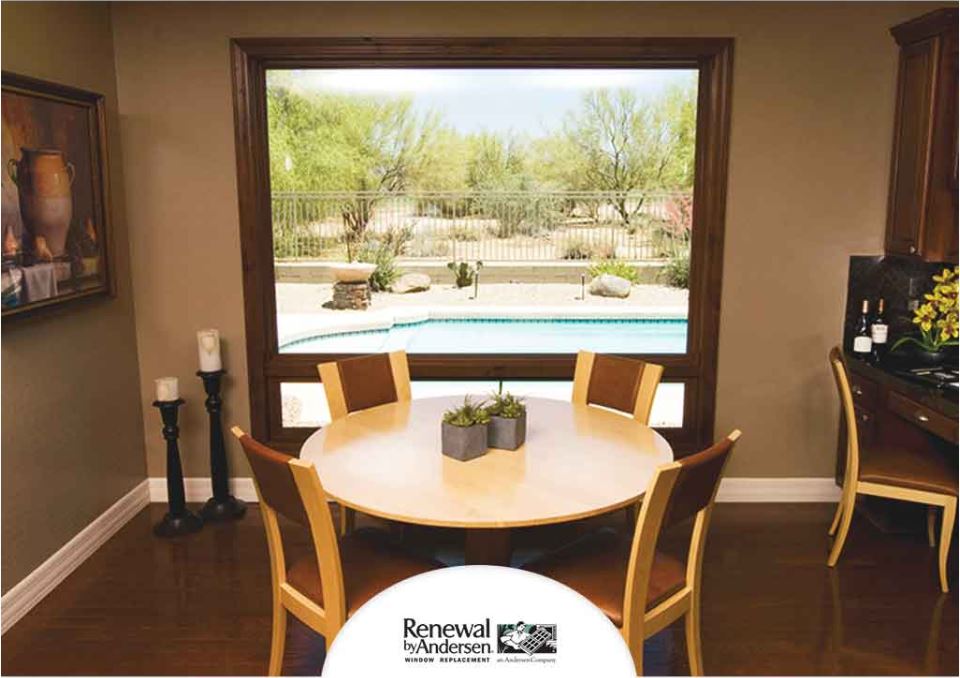MENU


Have you noticed that your windows sometimes look like they’re “sweating” in the summer? In most cases this is not a concern, though sometimes it can indicate an underlying problem with the window.

In today’s post, your local window installation expert, Renewal by Andersen® of Cincinnati discusses what causes a window to appear to sweat in the summer.
Condensation in Windows
Condensation happens when moist outside air hits a colder surface indoors like your window glass. Though it’s more common in winter, it can also happen in warm weather as you begin running your air conditioner. Seeing condensation on your casement windows doesn’t mean that they’re not energy-efficient or that they’ve been damaged.
Turning up the heater in the winter creates a higher humidity level indoors. This makes the air inside your home warmer compared to the freezing outdoor temperature. In the summer, it’s the indoor temperature that’s colder than the outdoors.
Most homeowners usually see condensation on their windows in the early morning or late at night due to the lower temperatures outside at those times of day. As the temperature rises throughout the day, the condensation will normally dry on its own.
The Low-E coating on the window helps prevent heat from entering as the temperature rises. This why having energy-efficient windows can help your home stay cool in summer.
As the temperature goes down at night, the glass starts to cool from the outside. The low-E coating reduces heat transfer from inside, so the outside surface can significantly cool down. All these factors cause condensation to develop in the low-E coating.
At Renewal by Andersen of Cincinnati, we offer specialty windows that feature High-Performance™ Low E4® SmartSun™ glass, making them extremely energy-efficient, durable and low-maintenance. Some of our windows are up to 70% more energy-efficient than standard dual-pane windows.
The presence of condensation doesn’t necessarily indicate that you have bad windows. Actually, condensation on your windows can mean they have good, tight seals. It often indicates that you have energy-efficient windows. Old single-pane windows with poor insulation don’t form condensation.
Windows and patio doors that prevent air leakage, weatherstripping, modern insulation, vapor barriers and new construction techniques may also trap moisture inside your home, increasing the chance of condensation formation.
Minimize Window Condensation
The key to minimizing the presence of condensation on your windows is reduced humidity levels. With lower indoor humidity, the amount of excess moisture vapor in the air will decrease.
You can reduce indoor humidity by venting all gas appliances and clothes dryers and having an exhaust fan outside. Keep the exhaust fan in your kitchen running while cooking. The exhaust fan in your shower should be kept running until your bathroom mirror has cleared.
Make sure that your attic and furnace are well ventilated. Don’t store firewood in your home. Open your windows at least once a day to improve indoor ventilation. You may lower the setting on your furnace humidifier or turn it off completely if you’re still noticing condensation on your double hung windows.
Get in touch with experts if your windows are showing condensation that’s not related to climate and weather changes. You may want to consider replacing old, drafty windows with energy-efficient ones. Window replacement is complex and is best handled by professionals. Make sure to choose a local contractor that provides quality windows and excellent workmanship.
You can rely on Renewal by Andersen of Cincinnati for some of the most energy-efficient windows in the industry. We offer high-quality sliding, casement, picture and bay windows. Call us at (866) 609-5033 or complete our online form for a free consultation. We serve homeowners in Loveland, Sharonville, West Chester, Cincinnati, OH, and nearby areas.